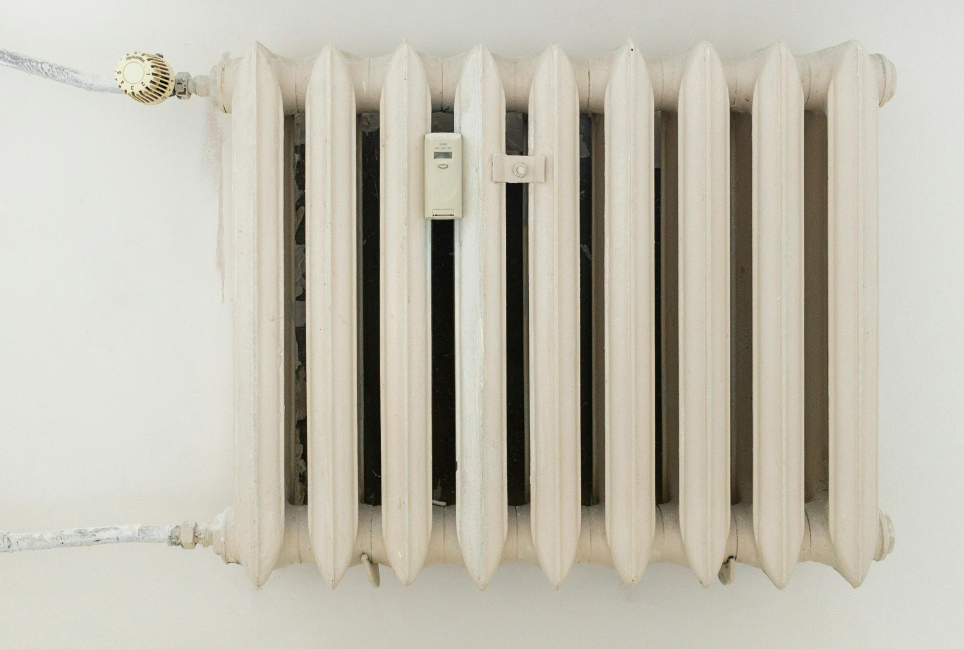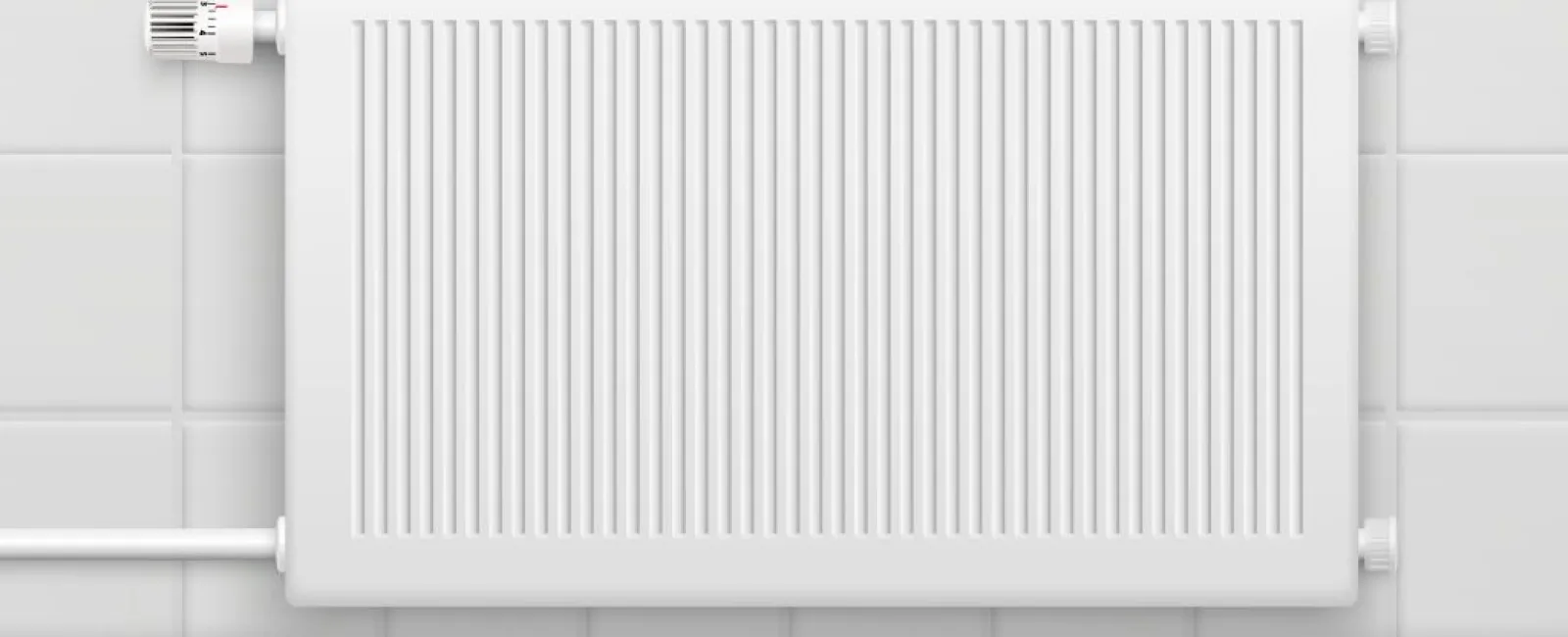June 18, 2025
As temperatures drop, ensuring your wall heater is ready to work efficiently becomes a top priority for staying cozy at home. Whether you're dealing with a gas or electric wall heater, knowing the basics of operation, troubleshooting, and maintenance is helpful to keep it running smoothly. This guide will provide detailed steps to turn on the wall heater safely, identify and fix common problems, and maintain your heater for reliable performance throughout the season. For residents needing support with HVAC in Torrance, CA, professional assistance is available to address any complex heating issues.
How to Turn On a Gas Heater on the Wall
Gas wall heaters offer reliable warmth, but starting them can be tricky, especially if they haven't been used. Here's a straightforward guide to getting your gas wall heater up and running:
- Check the Gas Supply: Ensure the gas valve is fully open, allowing gas flow to the heater.
- Locate the Control Knob: Turn it to the "Pilot" position, which readies the heater for ignition.
- Press and Hold: While in the "Pilot" position, press down on the control knob and simultaneously light the pilot flame.
- Switch to "On": Once the pilot flame is steady, turn the control knob to the "On" position to start the heating.
Following these steps, you can safely turn on a gas wall heater without hassle, setting you up for a cozy, heated space.
Wall Heater Thermostat
Your wall heater thermostat is crucial for maintaining a comfortable and energy-efficient home environment. Acting as the "brain" of your heating system, the thermostat continuously monitors and adjusts the temperature to match your desired comfort level. For optimal efficiency, set your thermostat between 68°F 72°F, a range that balances warmth with energy savings.
To ensure you're heating your space effectively, periodically check that the thermostat settings align with the room's current needs. For instance, you may want a slightly higher temperature setting during colder evenings and a lower one when you're out. Adjusting the thermostat based on actual usage can help prevent unnecessary energy consumption, keeping your utility bills in check while maximizing comfort.
How to Light a Gas Heater
Manual lighting may be necessary to get sure gas heaters, especially older models, running. Here's a safe and straightforward way to light your gas heater:
- Turn the Control Knob to "Pilot": Begin by setting the control knob to the "Pilot" position, then press and hold it down. This allows gas to flow to the pilot valve for ignition.
- Ignite the Pilot Light: Carefully bring a lighter or matchstick close to the pilot valve to ignite the flame.
- Hold Steady for 20-30 Seconds: Once the flame is lit, continue holding the knob for an additional 20-30 seconds to ensure the pilot light remains stable.
- Switch to "On": After the flame is steady, turn the control knob to the "On" position to start heating.
By following these steps, you'll safely know how to light a gas heater and have it ready to provide warmth throughout your home. If you encounter difficulties or the flame doesn't stay lit, it may be best to consult a professional for effective gas furnace repair to ensure safe operation.
Electric Heater Not Working
If your electric heater isn't producing heat, it could be due to a minor issue you can quickly address. Here are a few steps to check before calling in a professional:
- Check the Power Source: Verify that the heater is plugged in securely and that the circuit breaker hasn't tripped. Sometimes, a simple reset of the breaker can solve the problem.
- Inspect the Thermostat: Ensure your thermostat is set to "Heat" mode and the temperature is adjusted above the current room temperature to activate the heater.
- Look for Blockages: Dust buildup or nearby objects can obstruct the heater's airflow, impacting its performance. Clear any obstructions to improve efficiency.
If, after these checks, your electric heater still isn't working, it may be best to schedule a professional inspection. Persistent issues could indicate an internal fault or electrical problem that requires expert attention to ensure safe and efficient operation.

Wall-Mounted Gas Heater Problems
Wall-mounted gas heaters are a great way to save space while keeping your home warm, but like any appliance, they can sometimes develop issues. Here are a few common problems you may encounter and simple solutions to help resolve them:
- Uneven Heating: If your heater produces uneven warmth, check for any furniture, curtains, or objects around it that may be blocking airflow. Clear the space around the heater to improve air circulation and ensure heat is evenly distributed throughout the room.
- Strange Noises: Rattling or popping sounds from your wall-mounted heater could indicate loose parts or components. Carefully inspect the heater for any visible loose screws or panels, and tighten them if needed. Persistent noises, however, may require professional assistance.
- Yellow Flame: A gas heater should ideally have a blue flame. A yellow flame can signal incomplete combustion, which may lead to safety hazards like carbon monoxide. If you notice a yellow flame, it's best to consult a professional immediately to check for any issues with the gas line or burner.
By understanding and addressing these common wall-mounted gas heater problems, you can ensure your heater runs efficiently, providing consistent warmth while minimizing wear over time. Regular maintenance and reliable wall furnace repairs and service, as well as addressing issues promptly with services like floor furnace repairs can also help prevent these issues and extend the lifespan of your heater.
How to Light a Pilot Light on a Gas Heater
If the pilot light on your gas heater goes out, don't worry—relighting it is a quick and straightforward process that can restore heating. Follow these steps to relight your gas heater's pilot light safely:
- Turn the Control Knob to "Off": Start by turning the control knob to the "Off" position and wait a few minutes. This allows any residual gas to clear, making it safer to relight the pilot.
- Switch to "Pilot" and Hold the Knob Down: After waiting, turn the knob to the "Pilot" position and press it down. Holding the knob down allows gas to flow to the pilot.
- Ignite the Pilot Light: Carefully bring a lighter or match close to the pilot valve to ignite the flame. Continue holding the knob for about 20-30 seconds to ensure the flame remains stable.
- Turn to "On": Once the pilot light stays lit, release the knob and turn it to the "On" position to start heating.
By knowing how to light a pilot light on a gas heater, you can ensure consistent warmth in your home without unnecessary interruptions. If the pilot light doesn't stay lit after multiple attempts, it's a good idea to contact a professional for a thorough inspection, as this may indicate an issue with the thermocouple or gas line.
How to Turn On the Heater at Home
Turning on your home heater can vary depending on whether you have a gas or electric model, but knowing the correct process can ensure safe and efficient heating. Here's a guide to get each type of heater running smoothly:
- Gas Heaters: Start by following the steps to light the pilot light (if applicable), ensuring the flame is stable. Once the pilot is lit, turn the control knob to the "On" position and set the thermostat to your desired temperature. This should activate the heating cycle and begin warming your home.
- Electric Heaters: For electric models, turn on the thermostat and ensure it's "Heat" mode. Verify that the power source is connected and the circuit breaker is on to ensure proper heating.
Knowing how to turn on the heater at home is valuable, especially during colder months, as it ensures you can quickly and confidently prepare your space for cooler temperatures. If either type of heater doesn't respond after these steps, a professional inspection may be necessary to identify any underlying issues.
Electric Heater Not Working in House
Electric heaters are generally reliable, but they can sometimes encounter issues that are simple to fix. If your heater isn't producing heat, try these troubleshooting steps before calling in a professional:
- Reset the Circuit Breaker: If your electric heater tripped the breaker, resetting it might restore power and get it working again.
- Check the Plug: Make sure the heater is fully plugged in, and inspect the cord for any damage. A loose or damaged plug can prevent the heater from operating.
- Inspect the Thermostat Settings: Confirm that the thermostat is set to "Heat" mode and adjusted to a temperature higher than the room's current temperature.
If your electric heater still doesn't work after these checks, it might be time to consider a professional service check, such as AC repair, to address any underlying issues and restore efficient operation. Persistent issues can sometimes indicate internal problems that require expert attention, and electric furnace repair may be necessary to ensure the heater is safe and efficient.
Gas Heater Not Turning On
Here's What You Can Do
If your gas heater isn't turning on, there are a few common causes to check before contacting a professional. Here's a simple troubleshooting checklist to help get your heater back up and running:
- Confirm the Gas Supply: First, ensure the gas valve is open to allow gas flow to the heater.
- Check the Pilot Light: If it is out, relight it using the above steps. A working pilot light is essential for the heater to start.
- Examine the Thermostat: Set the thermostat to a temperature higher than the current room temperature to prompt the heater to turn on.
These tips can help when a gas heater is not turning on, offering a quick fix without extra hassle. If your heater still isn't responding after trying these steps, it may be time to schedule a professional inspection to address any potential mechanical or safety issues.
How to Turn off the Heater in an Apartment
When it's time to turn off your heater, especially in an apartment, it's essential to do so safely to ensure comfort, efficiency, and peace of mind. Follow these steps for a safe and effective shutdown:
- Adjust the Thermostat: Set your thermostat to the "Off" position or lower it to a minimal temperature to prevent the heater from cycling on.
- For Gas Heaters, Turn Off the Gas Supply: If you won't use your gas heater for an extended period, such as the warmer months, turn off the gas supply to prevent unnecessary gas flow.
Knowing how to safely turn off the heater in your apartment helps preserve the system's longevity and keeps your energy usage low. Taking these steps also ensures the heater is ready for a smooth restart when you need it next.
Additional Services to Keep Your Heating Efficient
Regular HVAC maintenance is essential to keep your heating system running efficiently and reliably. Total Home Environmental offers a range of services that can enhance the performance of your heating system and improve energy savings:
- Air Duct Sealing: Properly sealed air ducts maintain consistent airflow throughout your home and help reduce energy loss, ensuring warm air reaches every room without waste.
- Energy-Efficient HVAC System: Upgrading to an energy-efficient HVAC system can significantly lower your energy bills and provide reliable, consistent heating.
- Mini Split AC System: Mini splits, like a mini split AC system, allow for flexible temperature control in individual rooms, making them ideal for maintaining comfort while minimizing energy use in unused areas.
With regular maintenance and upgraded systems, you can extend the life of your heating equipment, reduce your environmental impact, and lower overall energy costs, keeping your home comfortable and efficient year-round.



